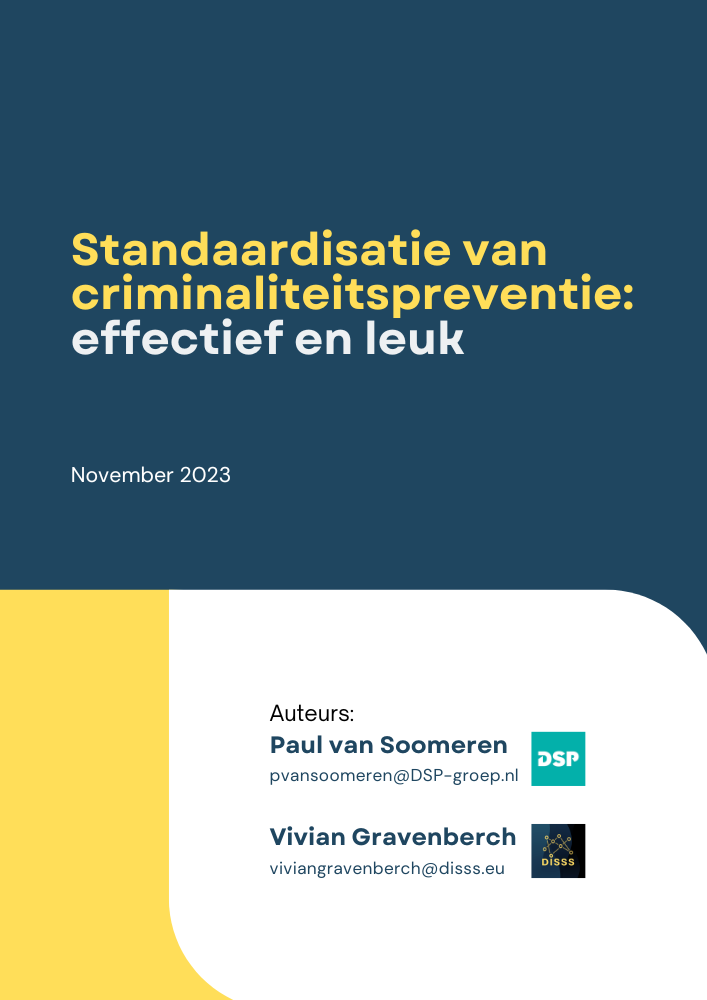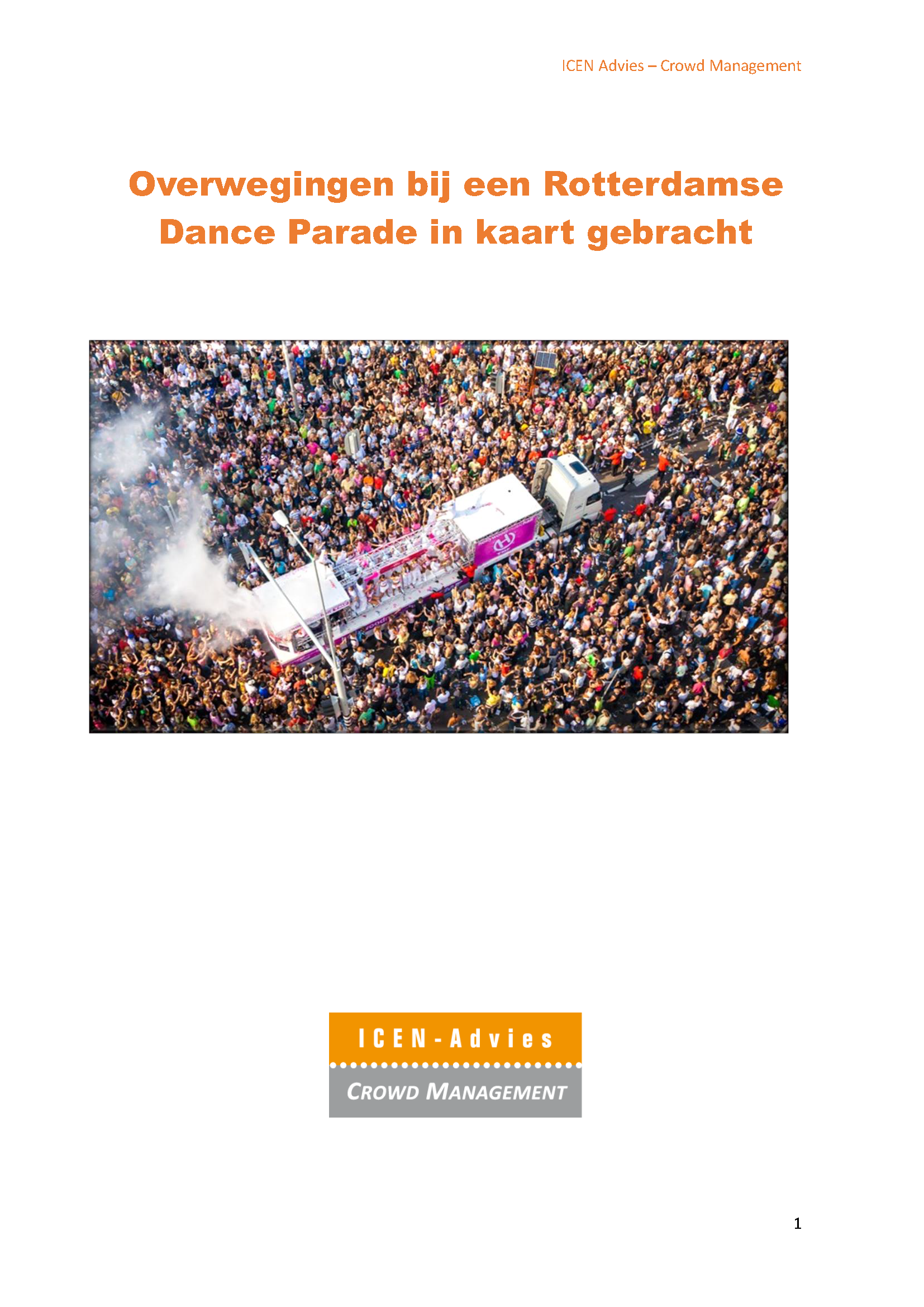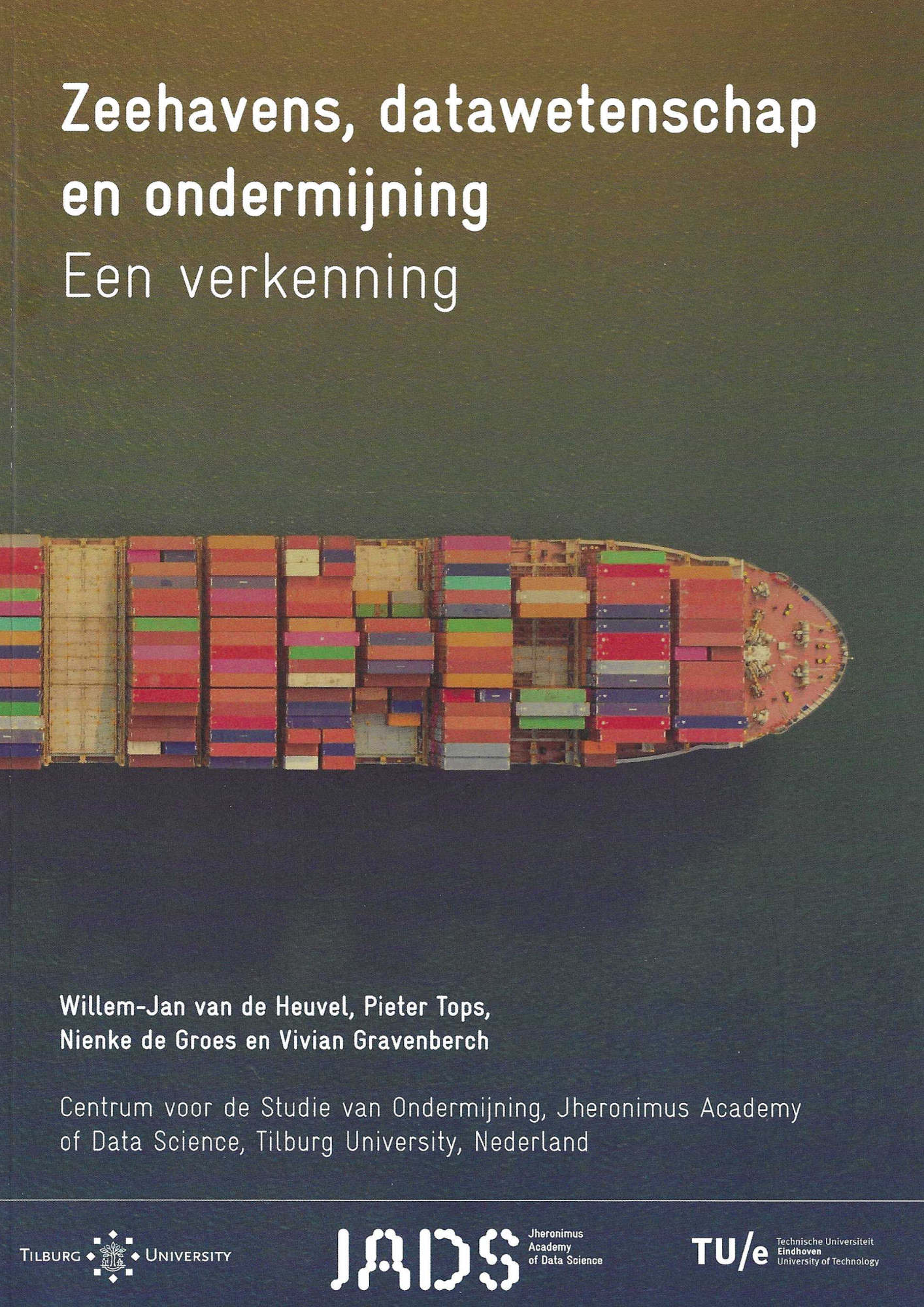
DISSS Annual report 2024
A brief overview of our work in 2024. This report showcases how DISSS is expanding its impact in creating safer public spaces across Europe. In this report, you'll find more about our group or individual training on inclusive and liveable public spaces, addressing online hatred and polarisation through the Digital Safe Cities programme, as well as publicly available research output and project results on vrious topics within the security domain.

Handboek Veilig Ontwerp en Beheer
The revised edition of the Dutch handbook "Veilig Ontwerp en Beheer" (Safe Design and Management), co-authored by among other authors, DISSS experts Paul van Soomeren and Vivian Gravenberch, is set to be released in February. This comprehensive guide focuses on Crime Prevention Through Environmental Design (CPTED) and provides practical tools for its implementation.
The book launch will take place at InHolland Rotterdam, offering an excellent opportunity for professionals in the field to gain insights into the latest developments in urban safety and design. If you're interested in attending this event, please email Vivian Gravenberch for more information and registration details.

Strengthening Local Authorities’ Capabilities and Capacities Regarding the Protection of Public Space: A Co-Productive Approach
In the book "Paradigms on Technology Development for Security Practitioners", the article titled "Strengthening Local Authorities' Capabilities and Capacities Regarding the Protection of Public Space: A Co-Productive Approach (pp.343-355)", co-authored by DISSS researchers Vivian Gravenberch, Paul van Soomeren and Sara Houweling, explores the effectiveness of a partnership approach in enhancing safety and security in public spaces. The study, based on the Secu4All project, examines the feasibility of standardisation and collaborative efforts in protecting public spaces, highlighting the importance of multi-stakeholder engagement and experiential learning. The article discusses international standards, including the newly published CEN/TS 14383-2:2022, and emphasises the application of the latest generation Crime Prevention Through Environmental Design (CPTED) principles in strengthening local authorities' capabilities.

Vulnerability Assessment for Places of Worship in the EU
In the book "Paradigms on Technology Development for Security Practitioners", between pages 357 and 369, the article titled "Vulnerability Assessment for Places of Worship in the EU" discusses the ProSPeReS project. The article was co-authored by DISSS’ers Anna van der Stok and Vivian Gravenberch. The ProSPeReS project aimed to develop a protection system for places of worship against man-made threats, balancing security measures with their open nature through a risk-based approach and vulnerability assessments. Results from these assessments revealed gaps in technical security measures, security culture, staff training, and stakeholder cooperation, highlighting the vulnerability of places of worship as soft targets due to their inherent characteristics.

Digitale Maatschappelijke Onrust
De publicatie van de reeks rapporten door DSP-groep, Verwey-Jonker Instituut, en DISSS is nu beschikbaar. Deze rapportenreeks werd gecommissioneerd door het Ministerie van Binnenlandse Zaken en Koninkrijksrelaties (BZK) van Nederland, ter voorbereiding van een gezamenlijk conceptueel kader voor nationale partners. Dit rapport biedt een diepgaande blik op de wereld van digitale maatschappelijke onrust. Het legt de dynamiek en complexiteit ervan bloot, en geeft inzicht in de uitdagingen en mogelijkheden die het met zich meebrengt.

Interviews over Maatschappelijke Onrust
De publicatie van de reeks rapporten door DSP-groep, Verwey-Jonker Instituut, en DISSS is nu beschikbaar. Deze rapportenreeks werd gecommissioneerd door het Ministerie van Binnenlandse Zaken en Koninkrijksrelaties (BZK) van Nederland, ter voorbereiding van een gezamenlijk conceptueel kader voor nationale partners. Dit rapport bevat een gedetailleerde rapportage van interviews die zijn gevoerd met ketenpartners. Deze interviews zijn essentieel geweest om het begrippenkader te formuleren, verduidelijken en inzichtelijk te maken.

Maatschappelijke Onrust
De publicatie van de reeks rapporten door DSP-groep, Verwey-Jonker Instituut, en DISSS is nu beschikbaar. Deze rapportenreeks werd gecommissioneerd door het Ministerie van Binnenlandse Zaken en Koninkrijksrelaties (BZK) van Nederland, ter voorbereiding van een gezamenlijk conceptueel kader voor nationale partners. Dit document betreft een literatuur- en documentenstudie naar de eenduidigheid, helderheid en meetbaarheid van veelgebruikte begrippen omtrent maatschappelijke onrust en -stabiliteit. Het doel is om een beter begrip te krijgen van deze concepten en hun toepassing in de praktijk.

Standaardisatie van criminaliteitspreventie; effectief en leuk
Dit artikel gaat over hoe in Nederland en internationaal strategieën zoals Veilig Ontwerp en Beheer (VOB) en Crime Prevention Through Environmental Design (CPTED) worden gebruikt om veiligheidsproblemen aan te pakken door middel van samenwerking en ontwerp, wat ook bewezen effectieve aanpakken zoals de Veiligheid Effect Rapportage (VER) en het Politie Keurmerk Veilig Wonen (PKVW) omvat.

Standardisation of crime prevention can be effective and fun
It is common knowledge that the prevention of crime, incivilities and feelings of insecurity require an approach in which local authorities and law enforcement agencies work together with social managers, urban/regional planners and designers and local residents and businesses. The same goes for Security by Design (SbD), Crime Prevention through Urban Design, Planning and Management (CP-UDP), and Crime Prevention through Environmental Design (CPTED). In this article, we will use the term CPTED.

How to demotivate a motivated offender
This article has been nominated for City Security Magazine "Article of the Year". It describes the Routine Activity Theory proposed by Marcus Felson and Lawrence Cohen, explaining that crime opportunities occur when three elements align: a likely offender, a suitable target, and the absence of a capable guardian. It details how the Dutch Institute of Safe and Secure Spaces (DISSS) helps stakeholders identify suitable targets, evaluate risks, and create capable guardians to prevent crimes in public spaces using various standards, methods, and technological innovations.

Rapport Dance Parade Rotterdam (publieke versie)
Komt er een volgende Dance Parade Rotterdam? Die vraag is sinds de laatste editie in 2009, regelmatig gesteld, in de media en in de gemeenteraad, en door de organisator van destijds. In het huidige coalitieakkoord is de vraag gesteld welke consequenties de terugkeer van de Dance Parade heeft wanneer deze veilig en verantwoord georganiseerd wordt.

Zeehavens, datawetenschap en ondermijning: een verkenning
DISSS researcher Vivian Gravenberch has co-authored a groundbreaking publication titled "Zeehavens, datawetenschap en ondermijning: een verkenning" (English: "Seaports, Data Science and Subversion: An Exploration"), published by the Jheronimus Academy of Data Science. This comprehensive study, available through the Jheronimus Academy of Data Science, explores the intersection of data science, port operations, and efforts to combat subversive activities in maritime environments. It offers valuable insights into how advanced technologies can enhance port security and efficiency while addressing the complex challenges of criminal activities in seaports.













